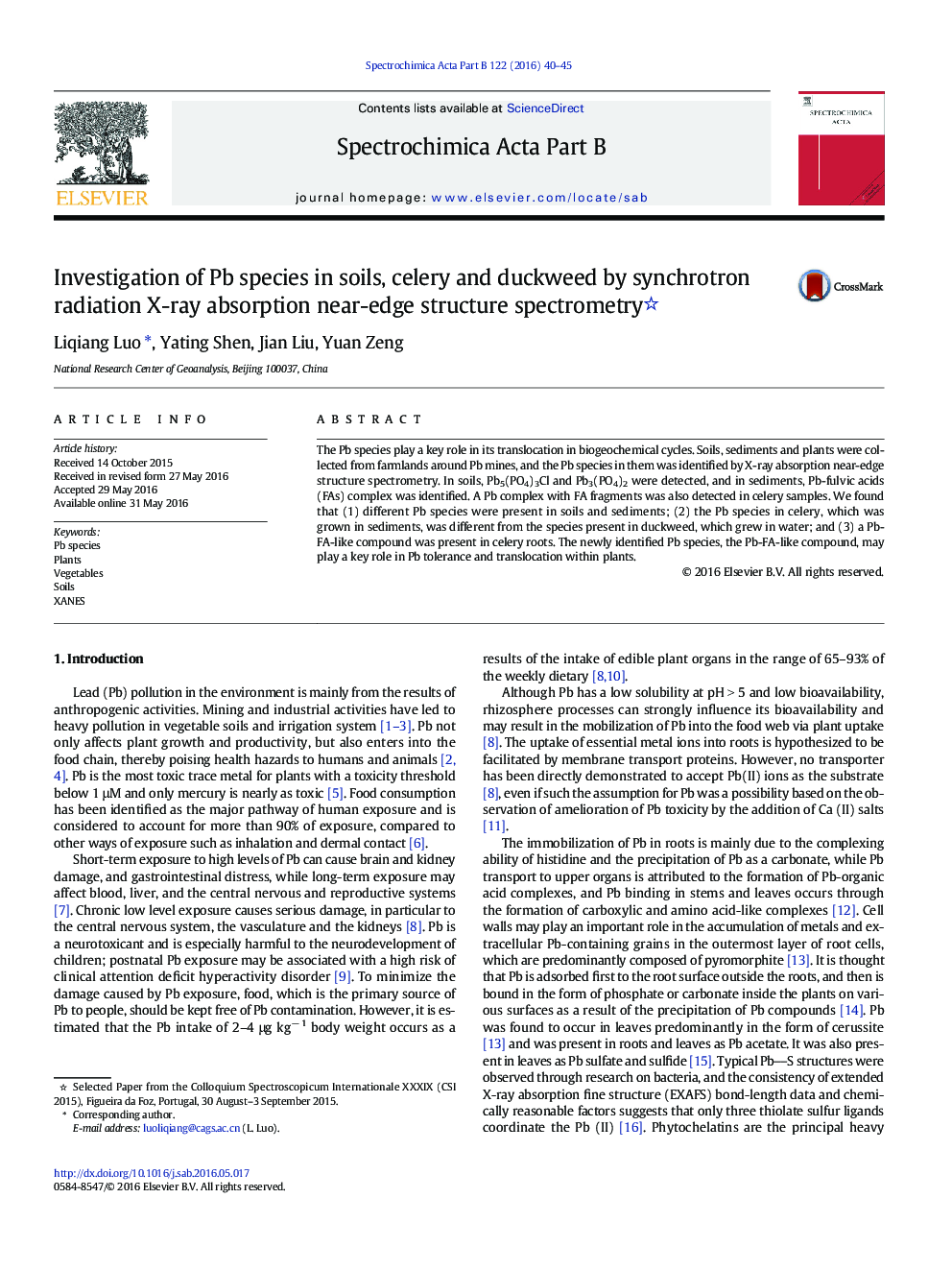| Article ID | Journal | Published Year | Pages | File Type |
|---|---|---|---|---|
| 1239555 | Spectrochimica Acta Part B: Atomic Spectroscopy | 2016 | 6 Pages |
•Pb species in low concentrations in soils and plants were identified by XANES.•The different Pb species occurred between soils and sediments.•Chloropyromorphite was identified in roots of plants and as a tolerance mechanism.•Pb-fulvic acid (FA)-like compound was identified in the roots of celery.•Newly identified Pb-FA-like compounds may play a key role in translocation of Pb within plants.
The Pb species play a key role in its translocation in biogeochemical cycles. Soils, sediments and plants were collected from farmlands around Pb mines, and the Pb species in them was identified by X-ray absorption near-edge structure spectrometry. In soils, Pb5(PO4)3Cl and Pb3(PO4)2 were detected, and in sediments, Pb-fulvic acids (FAs) complex was identified. A Pb complex with FA fragments was also detected in celery samples. We found that (1) different Pb species were present in soils and sediments; (2) the Pb species in celery, which was grown in sediments, was different from the species present in duckweed, which grew in water; and (3) a Pb-FA-like compound was present in celery roots. The newly identified Pb species, the Pb-FA-like compound, may play a key role in Pb tolerance and translocation within plants.
